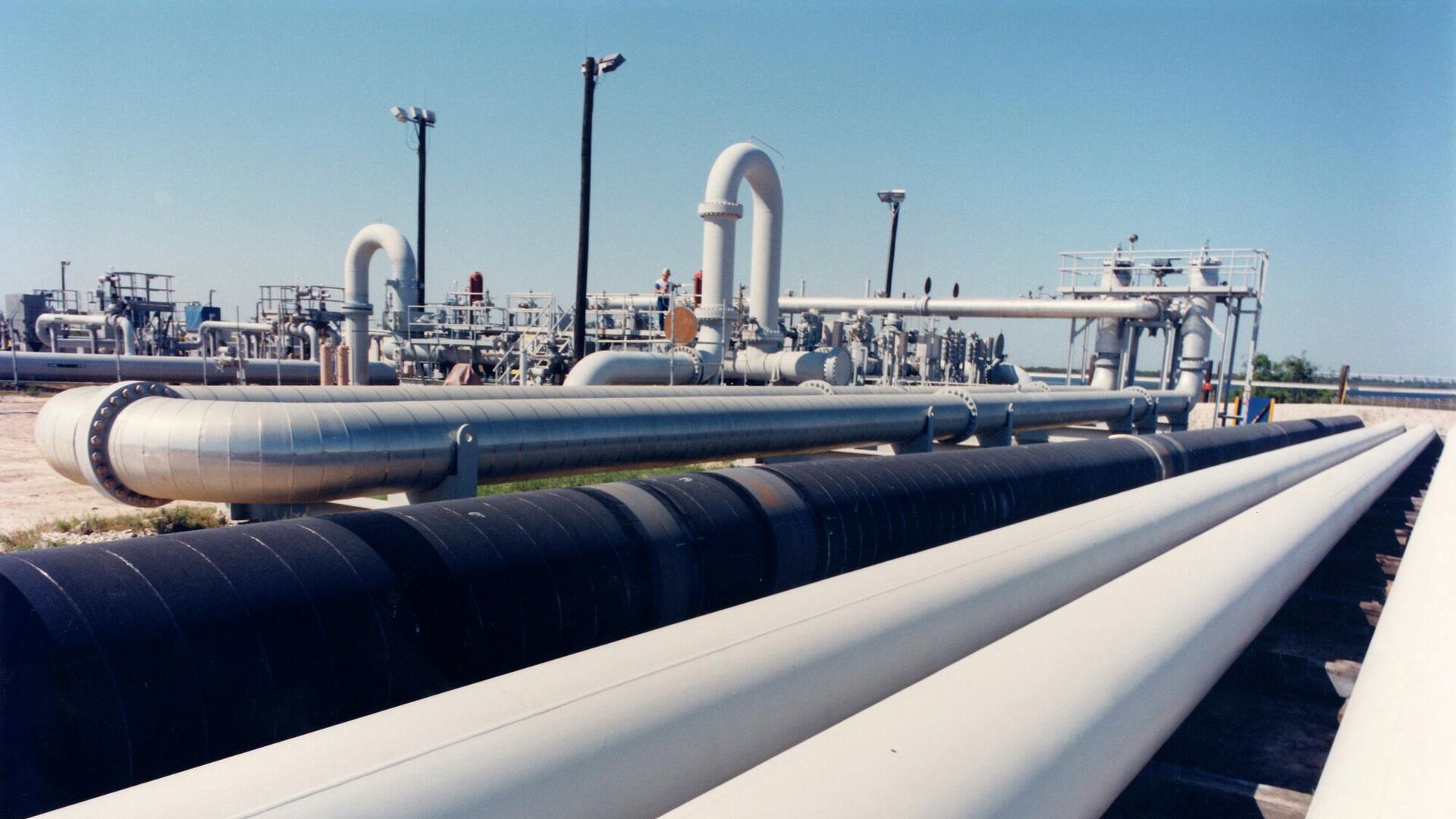https://sputnikglobe.com/20230930/oil-prices-up-nearly-30-in-3rd-quarter-at-highest-level-since-start-of-ukraine-conflict-1113814960.html
Oil Prices Up Nearly 30% in 3rd Quarter at Highest Level Since Start of Ukraine Conflict
Oil Prices Up Nearly 30% in 3rd Quarter at Highest Level Since Start of Ukraine Conflict
Sputnik International
New York-traded West Texas Intermediate (WTI) crude for delivery in November settled at $90.79 per barrel, down 92 cents, or 1%, on the day. For the month, the US crude benchmark rose 8.5%.
2023-09-30T03:38+0000
2023-09-30T03:38+0000
2023-09-30T04:21+0000
economy
crude
crude oil
crude exports
wti
oil prices
https://cdn1.img.sputnikglobe.com/img/07e6/09/0d/1100720462_0:0:2000:1125_1920x0_80_0_0_075ca83cb23895c8e7a6804142258a07.jpg
New York-traded West Texas Intermediate (WTI) crude for delivery in November settled at $90.79 per barrel, down 92 cents, or 1%, on the day. While WTI fell on the day, it rose 0.8% on the week, resuming its rally from the end of August after a one-week hiatus last week. For the month, the US crude benchmark rose 8.5%. The July-September period, when WTI rose 26.5%, also marked the best quarter for the US benchmark since the first three months of 2022. Then, WTI traded as high as $130 per barrel as Russia's special military operation in Ukraine opened the way for the West to impose sanctions on Moscow that began the long-running disruption in global commodity flows. Now, WTI is within striking range of triple-digit pricing again, reaching a 13-month high of $95.03 on September 28. London-traded Brent for the most-active December contract settled at $92.20 a barrel, down 90 cents, or 1%, on the day. The global crude benchmark rose 0.3% on the week, 6.8% on the month and 23% for the quarter. The global crude benchmark reached a ten-month high of $95.35 on September 28. Oil prices have gained between $25 and $30 from the May lows of beneath $64 for WTI and $72 for Brent. The rally was largely in response to cumulative production cuts of at least 1.3 million barrels per day by Saudi Arabia and Russia. Russia and the nations associated with the Organization of the Petroleum Exporting Countries (OPEC), such as Saudi Arabia, will meet again next week to review the impact of their production cuts on the market and their future plans. Demand for US crude has, meanwhile, exploded internationally as it begins to fill some pockets underserved by the Saudi-Russian production cuts. That has led to a plunge in inventory levels at the Cushing, Oklahoma, hub that serves as a central delivery and storage point for US crude. This is especially so with the pick-up in shipments of a new US crude grade called WTI Midland - which is comparable to the viscosity of the heavier Arab and Russian oils versus the typically light-grade that’s WTI.
Sputnik International
feedback@sputniknews.com
+74956456601
MIA „Rossiya Segodnya“
2023
Sputnik International
feedback@sputniknews.com
+74956456601
MIA „Rossiya Segodnya“
News
en_EN
Sputnik International
feedback@sputniknews.com
+74956456601
MIA „Rossiya Segodnya“
Sputnik International
feedback@sputniknews.com
+74956456601
MIA „Rossiya Segodnya“
crude, crude oil, crude oil exports, oil prices, west texas intermediate, wti
crude, crude oil, crude oil exports, oil prices, west texas intermediate, wti
Oil Prices Up Nearly 30% in 3rd Quarter at Highest Level Since Start of Ukraine Conflict
03:38 GMT 30.09.2023 (Updated: 04:21 GMT 30.09.2023) NEW YORK (Sputnik) - Crude prices fell on the last trading day of September on growing unease over how the world might cope in the coming months with increasing energy costs, but those betting on higher oil prices still won big on the month and quarter, helped largely by the Saudi and Russian production cuts.
New York-traded West Texas Intermediate (WTI) crude for delivery in November settled at $90.79 per barrel, down 92 cents, or 1%, on the day.
While WTI fell on the day, it rose 0.8% on the week, resuming its rally from the end of August after a one-week hiatus last week. For the month, the US crude benchmark rose 8.5%.
The July-September period, when WTI rose 26.5%, also marked the best quarter for the US benchmark since the first three months of 2022. Then, WTI traded as high as $130 per barrel as Russia's special military operation in Ukraine opened the way for the West to impose sanctions on Moscow that began the long-running disruption in global commodity flows. Now, WTI is within striking range of triple-digit pricing again, reaching a 13-month high of $95.03 on September 28.
London-traded Brent for the most-active December contract settled at $92.20 a barrel, down 90 cents, or 1%, on the day. The global crude benchmark rose 0.3% on the week, 6.8% on the month and 23% for the quarter. The global crude benchmark reached a ten-month high of $95.35 on September 28.
"After an amazing week, month and quarter, oil was ready for some profit-taking," Ed Moya, analyst at online trading platform OANDA, said in a note to the company's clients. "Energy traders quickly realized this wasn't the time for oil to rally above the $100 a barrel level, so they are cautiously locking in some profits."
Oil prices have gained between $25 and $30 from the May lows of beneath $64 for WTI and $72 for Brent. The rally was largely in response to cumulative production cuts of at least 1.3 million barrels per day by Saudi Arabia and Russia.
Russia and the nations associated with the Organization of the Petroleum Exporting Countries (OPEC), such as Saudi Arabia, will meet again next week to review the impact of their production cuts on the market and their future plans.
Demand for US crude has, meanwhile, exploded internationally as it begins to fill some pockets underserved by the Saudi-Russian production cuts. That has led to a plunge in inventory levels at the Cushing, Oklahoma, hub that serves as a central delivery and storage point for US crude. This is especially so with the pick-up in shipments of a new US crude grade called WTI Midland - which is comparable to the viscosity of the heavier Arab and Russian oils versus the typically light-grade that’s WTI.


